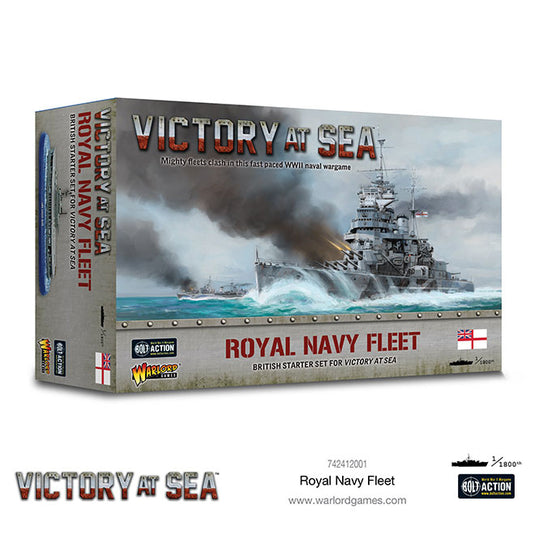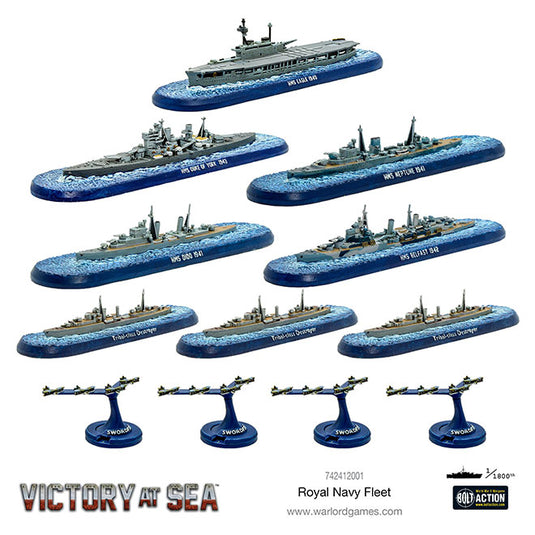


We will send you a notification as soon as this product is available again.
The Royal Navy of Great Britain was the world’s greatest navy at the outbreak of the Second World War. However, Britain went to war with mainly First World War-vintage vessels. Since the Royal Navy already possessed many powerful units, construction of the most modern designs was limited. This meant that at the outbreak of World War Two Britain had far more battleships than most other nations, but they had smaller guns than those built to the most modern ships.
Though the main battle force was kept concentrated in home waters, task forces were assigned to many distant areas, but the Royal Navy could not be strong everywhere. Although badly stretched, the Royal Navy lived up to its traditional ‘can do!’ ethos, fighting hard in all theatres.
In addition to the battleship forces, the Royal Navy maintained a handful of fast battlecruisers – some of them quite old – and aircraft carriers. These were backed up by a strong cruiser force and light forces including destroyers, motor torpedo boats (MTBs) and motor gunboats (MGBs).
As the war went on, aircraft carriers became increasingly important and air defences were steadily improved on all ships. Yet the big guns of the battleships and cruisers played a vital role in many theatres of war. British capital ships saw action in the Arctic and the Atlantic against German commerce raiders, in the Mediterranean against Italian forces, and ventured into the Pacific in an ill-fated attempt to stem the Japanese advance. Though the great fleet actions planned for and desired by the architects of the Royal Navy did not materialise during World War Two, the Royal Navy adapted well to the war it was destined to fight and emerged with great honour.
Contents:
- Eagle-class Carrier - HMS Eagle 1940
- King George V-class Battleship - HMS Duke of York 1943
- Leander-class cruiser - HMS Neptune 1941
- Edinburgh-class cruiser - HMS Belfast 1942
- Dido-class cruiser - HMS Dido 1940
- Tribal-class Destroyer x3
- Torpedo-Bomber Aircraft - Fairey Swordfish x4 flights
- Ship Cards and Damage Sliders
- Assembly Instructions
- Ships are in Resin and Warlord Resin
What are miniatures used for in tabletop games?
How do I paint my miniatures?
What materials are miniatures typically made from?
How can I start collecting miniatures?
Where can I buy miniatures?
What are some tips for assembling miniatures?
Can miniatures be used in different games?
How should I store and transport my miniatures?
Are there any beginner-friendly miniature painting tutorials?




